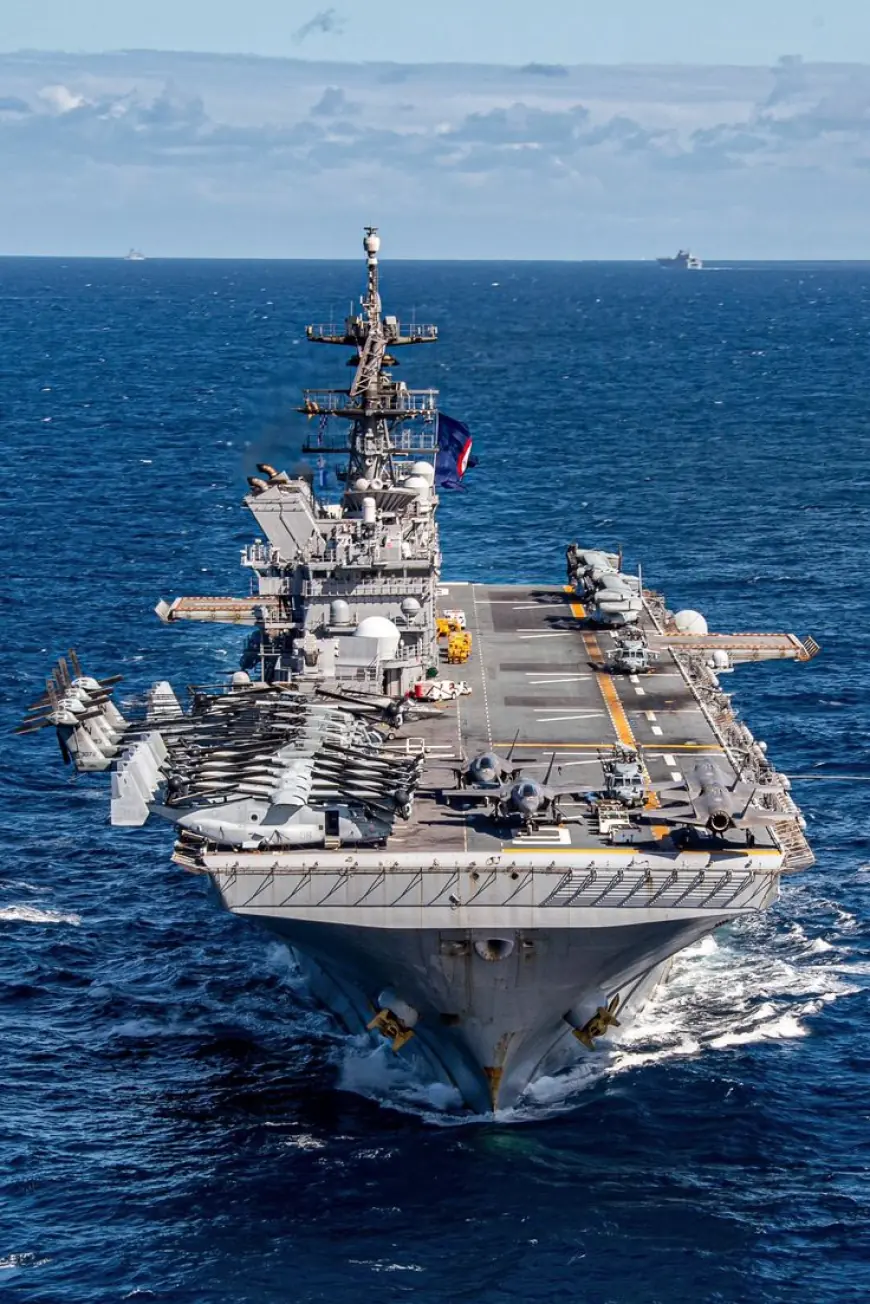Navigating the Future Seas: 10 Essential Navy Current Affairs for 2025
As global maritime dynamics shift rapidly, naval forces across the world are adapting to new threats, technologies, and missions.

In 2025, the world's naval forces are at the forefront of a transformative era. The geopolitical landscape is evolving at an unprecedented pace, necessitating rapid modernization, strategic alliances, and innovations in defense technology. Navies are not just guardians of coastlines—they’re vital players in cyber defense, humanitarian response, climate initiatives, and global diplomacy.
Here are the 10 essential Navy current affairs for 2025 that are shaping maritime defense strategies globally:
1. Rise of Autonomous Naval Systems
Unmanned surface and underwater vehicles (USVs and UUVs) have gone from prototype to deployment. Nations like the U.S., China, and the UK have integrated AI-driven drones for reconnaissance, surveillance, and even mine-clearing. These systems reduce human risk and significantly expand operational capabilities.
2. Indo-Pacific Naval Buildup
The Indo-Pacific region continues to be a flashpoint for maritime tensions, especially in the South China Sea and Taiwan Strait. 2025 has seen increased naval exercises and presence from the U.S., India, Australia, and Japan, responding to China’s aggressive maritime stance and growing naval footprint.
3. Green Naval Technologies
Sustainability has entered defense strategy. Navies are investing in hybrid-electric propulsion, biofuels, and emissions-reducing technology. The Royal Navy’s HMS Implacable, launched in 2025, is the first large warship powered entirely by green hydrogen and solar-assisted systems.
4. Cybersecurity as a Maritime Priority
Cyber threats targeting naval vessels and infrastructure are escalating. In response, 2025 sees the formation of multinational naval cybersecurity task forces, especially within NATO and ASEAN. Real-time threat detection systems and AI-driven cyber-response platforms are being deployed aboard major fleets.
5. Arctic Naval Expansion
Melting ice caps are opening new shipping routes and strategic opportunities in the Arctic. Russia, Canada, and the U.S. have deployed icebreakers and specialized Arctic-capable naval units to protect economic interests and project power in this emerging frontier.
6. Quantum Communications Trials
China and the U.S. have begun live naval tests of quantum communication systems—offering unhackable messaging across long distances. This could revolutionize command and control in naval warfare by ensuring secure, real-time communication in contested environments.
7. Strengthening of AUKUS and QUAD
The AUKUS pact (Australia-UK-US) and the QUAD alliance (India-Japan-Australia-US) are ramping up joint naval drills, intelligence sharing, and submarine technology collaboration. 2025 sees the first AUKUS-QUAD combined naval exercise in the Indian Ocean, signaling a unified stand against regional threats.
8. Naval Role in Humanitarian Operations
Navies are playing a crucial part in disaster response, especially following the record-breaking cyclones and tsunamis of 2025. Ships equipped with mobile hospitals and water purification systems have saved thousands in Southeast Asia and the Caribbean, reinforcing the navy's role beyond combat.
9. Female Leadership on the Rise
2025 marks a milestone in naval inclusion. Admiral Aisha Rahman of the Pakistan Navy became the first woman to command a regional naval fleet in South Asia. Several other nations have followed suit, integrating more women into leadership and combat roles.
10. Artificial Intelligence in Combat Decision Making
AI is no longer just a support tool—it’s becoming a key decision-maker. The U.S. Navy’s Project Trident and France’s Nautilus AI programs are enabling real-time threat evaluation and tactical recommendations during engagements, reducing human error and reaction times dramatically.
Conclusion: A Dynamic Maritime Landscape
As the world's navies continue to evolve in 2025, adaptability remains the keyword. From addressing environmental concerns to integrating groundbreaking technologies, naval forces are navigating a future full of both promise and peril. Defense watchers, policymakers, and citizens alike must stay informed on these crucial developments.
Why This Matters for Theveza Readers
Understanding the currents shaping global naval forces helps decode broader geopolitical strategies, investment trends, and security threats. Whether you're tracking defense tech, maritime law, or military diplomacy, these 10 developments are essential knowledge for staying ahead.
What's Your Reaction?
 Like
0
Like
0
 Dislike
0
Dislike
0
 Love
0
Love
0
 Funny
0
Funny
0
 Angry
0
Angry
0
 Sad
0
Sad
0
 Wow
0
Wow
0



















































